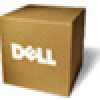Dell Precision M40 Dell Precision Mobile Workstation M40 User's Guide - Page 70
Computer, IDE Devices, Control Panel, System, Hardware, Device Manager
 |
View all Dell Precision M40 manuals
Add to My Manuals
Save this manual to your list of manuals |
Page 70 highlights
During POST, the computer checks the drive, comparing its characteristics with the system configuration information. The light blinks as the computer performs this check. Inconsistencies in the manufacturing of CD media may cause some higherspeed CD drives to vibrate more than others. Such vibration and associated noise do not indicate a defect in the drive or the CD. ¡ Make sure the sound is not caused by the application program that is running. The sound could be caused by a hardware malfunction. See "Help Overview" for instructions on obtaining technical assistance from Dell. ¡ Verify that the disc is fully seated on the drive spindle. l When you turn on the computer, you can hear floppy or hard drive activity during the boot routine. If your computer does not boot, call Dell for technical assistance. Otherwise, see the "Dell Diagnostics." l Test the drive indicator by typing dir x: at an MS-DOS prompt, where x is the drive letter, and pressing . l Verify that the drive is recognized by the computer (in Windows 2000, double-click the My Computer icon on your desktop). Most of the common boot sector viruses cause the drive to "disappear." Use virus-scanning software (if Dell installed the operating system on your computer, you should already have virus-scanning software) to check for and remove any viruses. l Clean the disc using a commercially available cleaning kit. l Clean the drive using a commercially available cleaning kit. l Try another CD or DVD. NOTE: Because of different conventions currently used in the industry, not all DVD titles work in all DVD drives. l Run the IDE Devices tests as described in "Dell Diagnostics." l Turn off the computer and remove the drive from the modular bay. Replace the drive and turn on the computer. If the CD, CD-RW, or DVD drive button doesn't eject the tray, or if you have a power failure: 1. Make sure the computer is off. 2. Straighten a paper clip and insert one end into the eject hole at the front of the drive; push firmly until the tray is partially ejected. 3. Pull the tray out the rest of the way. If the problem still exists after you complete the basic checks, fill out the Diagnostics Checklist as you perform the following steps: 1. Save and close any open files, exit any open application programs, and shut down the computer. 2. If the drive is installed in the modular bay, remove the drive. If the drive is a fixed optical drive, go to step 6. 3. Reinstall the drive. 4. Reboot the computer. Does the light blink during the boot routine? Yes. Go to step 6. No. Go to step 5. 5. Remove and reinsert the drive. Reboot the computer. Does the light blink during the boot routine? Yes. Go to step 6. No. Go to step 10. 6. Remove the hard drive and boot the computer from a bootable CD. Does the light blink? Yes. Go to step 7. No. Go to step 10. 7. Reinstall the hard drive. Then open the Control Panel, double-click the System icon, click the Hardware tab, and click the Device Manager button. Is the appropriate driver installed? Yes. Go to step 8. No. Load the driver, and return to step 1 to begin this procedure again. (To load the driver, use the Drivers and Utilities CD you received with your Dell computer.) 8. Insert a bootable floppy disk into drive A and reboot the computer. 9. Type x:(where x is the drive) and press . Then type dir and press . Does MS-DOS display the root directory contents for the drive? Yes. The problem is resolved. No. Go to step 10. 10. Insert your Drivers and Utilities CD into the drive and reboot the computer. Then run the IDE Devices device group. Does your drive pass all the tests? Yes. Return to step 1 and perform this troubleshooting procedure again. If you continue to experience trouble, call Dell for technical assistance.















